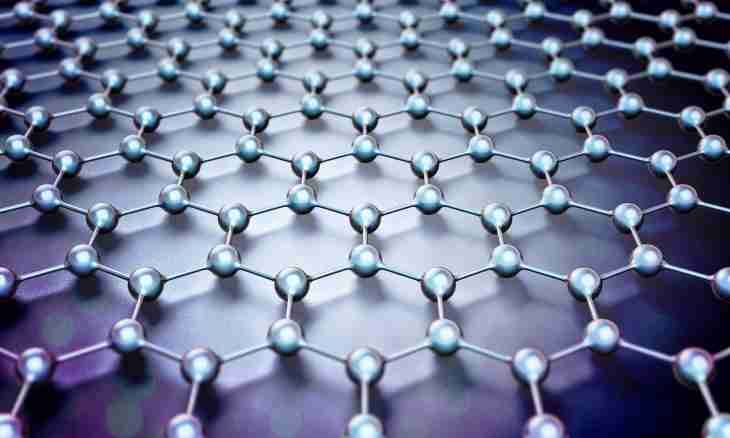Except carbon, the main subgroup of the IV group includes also silicon, germany, tin and lead. The sizes of atoms from top to down in subgroup increase, the attraction of valent electrons is weakened therefore metal properties amplify and nonmetallic weaken. Carbon and silicon – nonmetals, other metal elements.
Instruction
1. On an external electron layer carbon, as well as other elements of its subgroup, has 4 electrons. The configuration of an external electron layer is expressed by a formula 2s (2) 2p (2). Thanks to two not coupled electrons, carbon can show the valency of II. In wild spirits one electron passes from a s-subtotal to a p-subtotal, and valency increases up to IV.
2. Volatile hydrogen compound of carbon – CH4 methane, the only steady connection among all subgroup (unlike SiH4, GeH4, SnH4 and PbH4). The lowest CO carbon oxide is not salt-forming oxide, and the highest CO2 oxide – acid. To it there corresponds weak coal H2CO3 acid.
3. As carbon belongs to nonmetals, in connections with other elements it can show both positive, and negative oxidation levels. So, in connections with more electronegative elements, such as oxygen, chlorine, its oxidation level it is positive: CO (+2), CO2 (+4), CCl4 (+4), and with less electronegative – for example, hydrogen and metals – is negative: CH4 (-4), Mg2C (-4).
4. In the periodic system of elements of Mendeleyev carbon is under serial number 6, in the second period. It has relative atomic mass 12. Its electronic formula – 1s (2) 2s (2) 2p (2).
5. Most often carbon shows the valency equal to IV. Because of high energy of ionization and low energy of affinity to an electron the formation of ions, positive or negative, for it is uncharacteristic. Usually carbon forms covalent communications. Atoms of carbon are also capable to connect among themselves to formation of long carbon chains, linear and branched.
6. In the nature carbon can be both in a free look, and in the form of connections. Two allotropic modifications of free carbon – diamond and graphite are known. Limestone, chalk and marble have formula CaCO3, dolomite – CaCO3∙MgCO3. Carbon connections are the main components of natural gas and oil. All organic matter is also under construction on the basis of this element, and in the form of CO2 carbon dioxide carbon is in the atmosphere of Earth.
7. Diamond and graphite, allotropic modifications of carbon, strongly differ from each other in the physical properties. So, diamond is transparent, very firm and strong crystals, the crystal lattice has the tetrahedral building. In it there are no free electrons therefore diamond does not carry electric current. Graphite – dark gray soft substance with metal gloss. Its crystal lattice has complex layered structure, and existence in it of free electrons causes conductivity of graphite.
8. Under usual conditions carbon chemically maloaktiven, but when heating it reacts with many simple and complex substances, showing property both reducer, and oxidizer. As reducer it interacts with oxygen, sulfur and halogens: C+O2=CO2 (excess of oxygen), 2C+O2=2CO (lack of oxygen), C+2S=CS2 (carbon sulfur), C+2Cl2=CCl4 (tetrachloride carbon).
9. Carbon restores metals and nonmetals from their oxides that is actively used in metallurgy: C+CuO=Cu+CO, 2C+PbO2=Pb+2CO.
10. The water vapor which is passed through the heated coal gives water gas – mix of hydrogen and carbon oxide (II): C+H2O=CO+H2. This gas is used for synthesis of such substances as methanol.
11. Oxidizing properties of carbon are shown in reactions with metals and hydrogen. Carbides of metals and methane are as a result formed: 4Al+3C=Al4C3 (aluminum carbide), Ca+2C=CaC2 (calcium carbide), C+2H2↔CH4.

